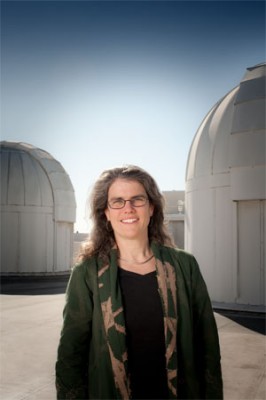
What’s her story? In January, Andrea Ghez became the first woman to win the Royal Swedish Academy of Sciences’ Crafoord Prize, one of the highest honors in astronomy.
How’d she do that? Proved that a supermassive black hole sits at the center of our galaxy. Ghez helped develop optical technologies that cut through the sight-muddying effects of Earth’s atmosphere, enabling her team to see the Milky Way’s center — 26,000 light years away — far more clearly than ever before. Which let them monitor thousands of previously invisible stars. Their orbital trajectories, Ghez showed, could only be explained by the presence of a titanic black hole with about 4 million times the mass of our sun.
Enviable Gear: World’s biggest optical telescopes. A pair of eight-story, 270-ton behemoths stationed at the W.M. Keck Observatory on top of Hawaii’s dormant Mauna Kea volcano, where generally clear and relatively city-light-free skies make for optimal stargazing.
Job perk: Has been going to Hawaii regularly since 1995. “But it’s very intense work. You stay up all night and sleep all day. You’re not on vacation.”
Job perk #2: Since 2006, has been able to control the telescope and view its findings remotely from her lab at UCLA. “We’re not astronomers with our eye to the telescope any more. Now we’re looking at data captured on the equivalent of a giant camera chip.”
Job perk #3: Awarded unrestricted $500,000 MacArthur Foundation “genius grant” in 2008. Is using the money to fund her research — and to bring her two sons, ages 10 and 6, to meet the king of Sweden at the Crafoord ceremony. “They’re thrilled about that.”




